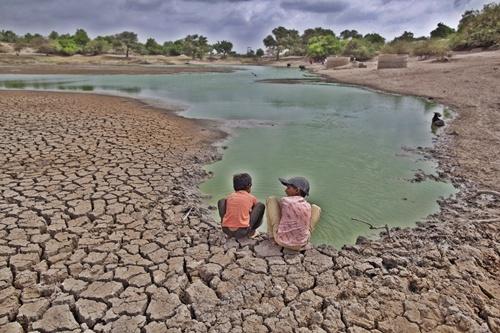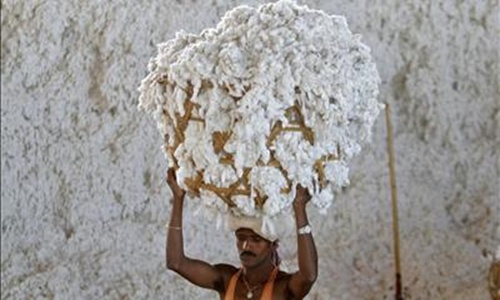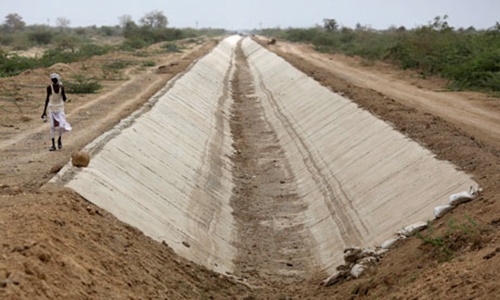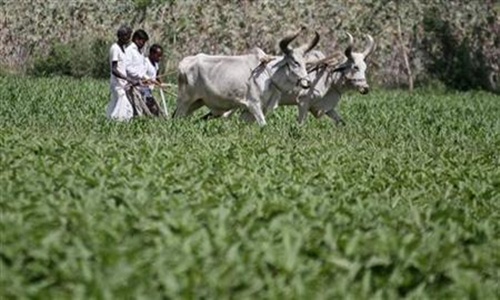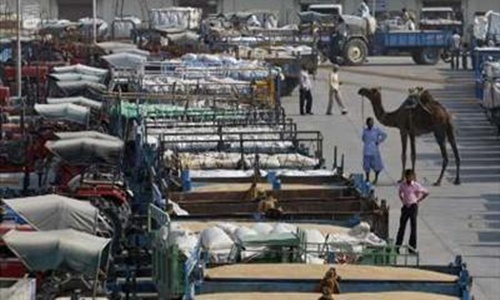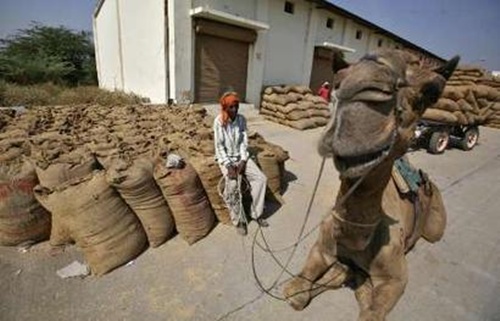 | « Back to article | Print this article |
The secret behind Gujarat's agriculture miracle
The industrial sector is not the only glittering success in Gujarat. Agriculture has also experienced a significant boom over the past decade, galloping far ahead of the national growth rate of three per cent yearly, and becoming a much-cited example for other states. But whom to credit for it has begun to arouse a heated debate.
Thirty kilometres from Rajkot - the third largest city in Gujarat, in the arid, semi-tropical Saurashtra - is the prosperous village of Hamirpur, with 120 homes and four temples.
Just outside it, village sarpanch Ratansibhai Patel is hunched over a dessicated BT cotton plant, thousands of acres of which have dried up in the area, ruining the village's agricultural prospects this season. Water from the Narmada, as promised by Chief Minister Narendra Modi, hasn't arrived in over a decade, leaving a rain-scarce land parched this year.
Click NEXT to read more...
The secret behind Gujarat's agriculture miracle
That doesn't stop all the men in Ratansibhai's village of Leuva Patels - an important votebank for Modi - from adoring him. "Write this in your book. He is like a God," says one bearded young farmer, albeit a little belligerently.
Just a few kilometres from this village, the story is very different. Another sarpanch of a neighbouring village curses him. "Modi hasn't given us anything," he complains, adding he plans to cast his vote for the Congress.
We later find the reason for the former's adoration of Modi - and the latter's derision - is a pipeline of drinking water routed to Hamirpur by a BJP MLA around six years ago.
Click NEXT to read more...
The secret behind Gujarat's agriculture miracle
His Congress-voting neighbour, on the other hand, has had to watch his carefully harvested pool of rainwater slowly dry up, leaving a muddy sludge for drinking and nothing for his crops.
Yet, this year is an anomaly compared to the last 10, where an unprecedented run of rain has seen farmers in this water-starved region prosper, fuelling a boom in BT Cotton and enabling many communities such the ones in Hamirpur who had largely abandoned farming for government jobs and small-scale businesses to plunge back into it.
One third of the cotton in the country comes from Gujarat. According to observers, if rainfall had been as irregular as the previous decades, Modi's prospects here could have been dramatically different.
Click NEXT to read more...
The secret behind Gujarat's agriculture miracle
Modi has also coasted on something else that began in 2002. "All of a sudden, the river started to flow in Gujarat," says Y K Alagh, well-known economist and former chairman of the Institute of Rural Management, Anand.
Alagh is referring to the Narmada, which thanks to the Sardar Sarovar project, initiated long before Modi became chief minister, has brought a new era of prosperity for farmers in many parts of the state.
While south Gujarat was always a zone of fertility, bone-dry north Gujarat also began to see a reversal of its fortunes.
Click NEXT to read more...
The secret behind Gujarat's agriculture miracle
Today, Modi continues to place advertisements in papers heralding his achievement of bringing water to the people, but the truth is, in over a decade, areas such as Saurashtra and Kutch that desperately needed this water haven't gotten much of it.
"He has had lots of luck, along with some vision," says an Ahmedabad-based developmental economist.
It's not as if Modi hasn't done anything for agriculture here. Perhaps the most credible of his accomplishments has been the radical improvement in the power infrastructure in the state.
Click NEXT to read more...
The secret behind Gujarat's agriculture miracle
The turning point for this was the overhaul of the Gujarat Electricity Board (GEB), the foundations for which were also laid before his tenure, in the late 1990s by Keshubhai Patel. Modi installed monitoring software at thousands of nodal points to curb rampant theft of power.
Result: decrease in pilferage from more than a third to less than a 10th of the total power produced. In addition to industry, farmers were immediate beneficiaries.
Now, Modi's Jyotigram scheme delivers uninterrupted supply of quality power - the kind that didn't spike and destroy pumps - to farms for at least four hours, but only at night, leaving the day for industry to draw its share. This was transformational.
Click NEXT to read more...
The secret behind Gujarat's agriculture miracle
Abundant power meant farmers in areas such as Saurashtra, Kutch and even North Gujarat that didn't benefit from perennial rivers such as Mahi, Narmada, Tapi, Karjan and Damanganga that south Gujarat enjoys, have been using this power surplus to pillage water from the ground using bore-wells, leading to a fragile water table.
The Modi government also continued work initiated by previous governments, building check dams and rainwater harvesting structures, although none of the wells in and around Rajkot showed evidence of significant recharge.
Click NEXT to read more...
The secret behind Gujarat's agriculture miracle
Modi's Krishi Mahotsav (farm festival), the government says, also brought important market linkages to farmers, although it is unclear whether the main beneficiaries were seed companies and makers of agricultural equipment looking to sign up customers.
Undoubtedly, one of the biggest benefits to the agricultural sector has been the improvement, lengthening and maintenance of Gujarat's superb roads under Modi that play a crucial role in bolstering the supply chain.
Still, naysayers exist, such as a group of researchers from the Institute for Resource Analysis and Policy (IRAP), Hyderabad.
Click NEXT to read more...
The secret behind Gujarat's agriculture miracle
Says an IRAP paper: "What clearly emerges from our analysis is that the real growth in agricultural production has occurred during 1988-89 to 1998-99. The growth rate was not only high but also steady."
According to IRAP, the severe drought in 1990-2000 made the following years look good, something economist Alagh also points to.
Alagh contends that if you discount the Gujarat government's strategy of using a low beginning year and a high ending year, annual agricultural growth hovers around the 6 per cent mark and not the 10 per cent government claim.
Click NEXT to read more...
The secret behind Gujarat's agriculture miracle
Whichever statistic you believe, the fact is, agriculture can still be a precarious occupation in parts of water-starved Gujarat.
Thirty-seven farmers from Saurashtra committed suicide a few months ago, not exactly a statistic you would expect from a state proclaiming a green revolution.
For Modi, this region, primarily dependent on rainfall, makes him most vulnerable in election years. Consistent amounts of it, along with a visionary project that he had nothing to do with, has secured his votebank in the last decade.
When the Narmada begins flowing here in a few years, he might just be invincible.
